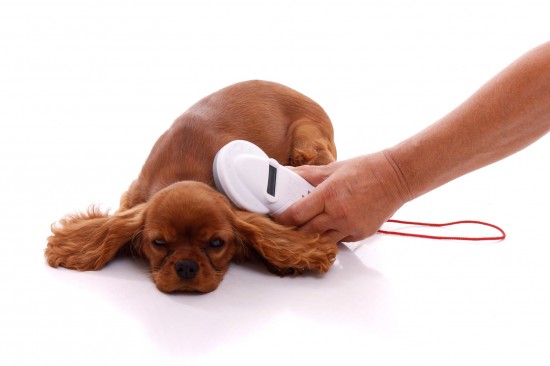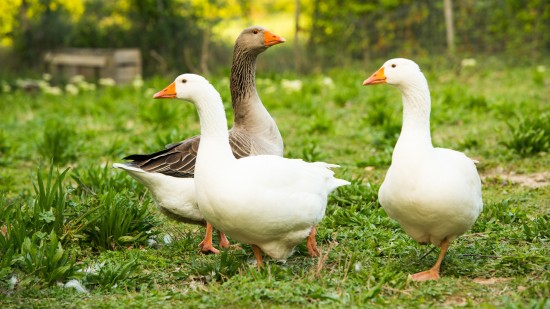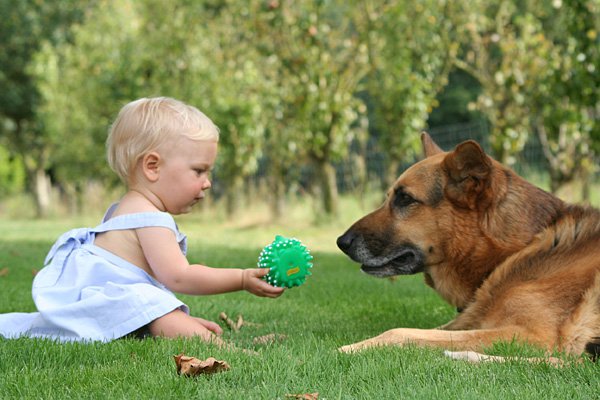A good dog owner loves his or her pet, no matter how many quirks it might have in behavior or personality. Unfortunately, not every dog is equally loved outside his or her home. While a dog抯 owner might be tolerant of an animal that barks constantly or one that refuses to come when called, the general public is not usually as tolerant. Most people expect dogs who are outside their homes will behave, that they will be quiet and tolerant, and that they will sit quietly and allow others to approach and talk to their masters or to pet them on the head. Although it sounds as if the general public is making unreasonable demands on your dog, they are not impossible to meet if your dog is a Canine Good Citizen.
The American Kennel Club (AKC) began the Canine Good Citizen program in 1989, in order to improve the image of man抯 best friend. The Canine Good Citizen program is the only AKC program that is open to all breeds and to mixed breed dogs. The test to achieve the Canine Good Citizen (CGC) award consists of ten simple tasks, which are scored on a pass or fail basis. In some areas, dogs with a CGC are granted additional privileges or entitle their owners to special breaks on their homeowner抯 insurance.
The road to the CGC often starts early, with training that begins in the first few months of your puppy抯 life. For some lucky dogs, that road starts with the new AKC S.T.A.R. program, open to puppies up to a year of age. The S.T.A.R. program consists of socialization, training, activity, and responsibility tasks. These tasks are taught in a basic training class held by a certified CGC evaluator. All of these tasks are focused on helping the new puppy owner get started with things such as housebreaking and very basic obedience.
Any dog, graduate of the S.T.A.R. program or not, can take part in the CGC program. Training for the CGC consists of slightly more advanced obedience, such as staying in place after sitting or walking through crowds of people without anxiety. Many dog owners take part in an obedience course that is focused on training your dog to pass the ten exercises that are on the CGC test. Once your dog is ready, the two of you can take part in the formal CGC test, which is often available through local training clubs or which may be held at dog shows.
In order to test for your CGC, your dog must be wearing a flat buckle collar and be on a six-foot leash. In addition, you must bring a brush or a comb, whichever the dog is usually groomed with, for test number three. Prior to testing, you will need to show proof that your dog has been vaccinated against rabies and sign the Responsible Dog Owner抯 Pledge. In order to receive the CGC award, your dog will have to pass these ten tests:
1. Accept a friendly stranger
2. Sitting (or standing) politely for petting
3. Appearance and grooming
4. Walking on a loose lead
5. Walking through a crowd
6. Sit and down, the stay in place
7. Come when called
8. Reaction to another dog
9. Reaction to distraction
10. Supervised separation
These tests are intended to challenge your dog in terms of obedience; however, they also enable the CGC evaluator to determine the stability of your dog抯 temperament. With the exception of tests number three and ten, all tests require some form of obedience. All of them, however are designed to determine the stability of his or her temperament.
Dogs that pass the CGC are less likely to cause difficulty at home and, for that reason, are less likely to end up in shelters. In addition, dogs that have passed their CGC have the skills to accompany their owners in public, proudly trotting at the end of their leashes, acting as ambassadors for their kind. So why not give your dog the chance to be a canine ambassador? It抯 never too late to start training!

 Positive Steps To Safeguarding Your Dog From Being Stolen
Positive Steps To
Positive Steps To Safeguarding Your Dog From Being Stolen
Positive Steps To
 How And When To Pair Ganders And Geese
How And When To P
How And When To Pair Ganders And Geese
How And When To P
 All you need to know about Pet Orthopedic surgeons in Gurgaon
All you need to know about Pet Orthopedic surgeons in Gurg
All you need to know about Pet Orthopedic surgeons in Gurgaon
All you need to know about Pet Orthopedic surgeons in Gurg
 Lifetime Costs Of Dog Ownership
Lifetime Costs Of
Lifetime Costs Of Dog Ownership
Lifetime Costs Of
 How To Tell When To Interact With A Puppy, And When To Leave It Be
How To Tell When
How To Tell When To Interact With A Puppy, And When To Leave It Be
How To Tell When